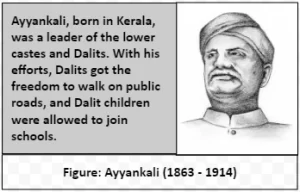![]() 11 Dec 2023
11 Dec 2023
This article deals with the concept of macro and micro social institutions that exert control and influence within society. An institution is something that works according to rules established or at least acknowledged by law or by custom. Institutions impose constraints on individuals. They also provide him/her with opportunities. Further, these institutions help to thrive communities and strengthen their interpersonal bonds.

Evolution from Flexibility to Rigidity in the Post-Vedic Era: It was only in the post-Vedic period that the caste system gradually transformed into the inflexible institution we are familiar with from well-known definitions.
<div class="new-fform">
</div>